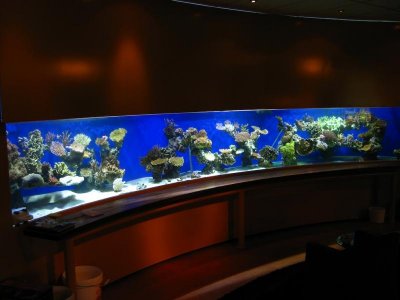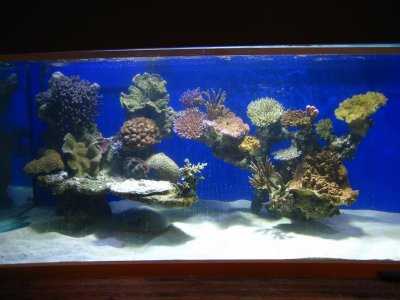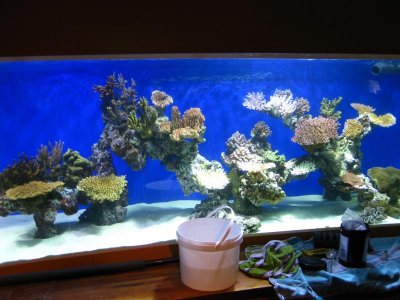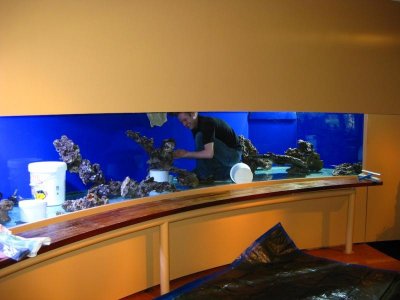nineball
Active member
Have you decided how to hide the overflow boxes and plumbing yet? You can use aragonite-based cement (aragocrete) to conceal overflow boxes. It has virtually the same chemical composition as coral and after six months of coraline algae growth you can't tell the difference between faux coral rock and the genuine article.
Here are some before and after shots of faux coral walls. The first two pics show Fiji live rock at the base of the faux rock wall. You could treat the end walls as free-standing formations or tie them in with real rock from your four features.
Mr. Wilson, I have not decided to do anything yet! I think it is important to briefly discuss my position before we craft a solution. I have thought about this from a number of vantage points especially with the discussions that took place in Chingchai's build on just how much effort would go into hiding the plumbing from public view.
Here are the operating principles I am using to guide me.
I am not bothered by exposed infrastructure that contributes to the health and welfare of the marine environment.
If a decision has to be made on whether to hide an artifact that would or may compromise the efficiency of water movement then the water flow trumps everything else. On this there is no compromise. The same applies to other fundamental priorities such as light or food corridors.
Where possible I will provide accessibility to infrastructure for maintenance and reliable operating performance. To the extent that I can I will try and future proof the aquascaping to ensure that access remains possible without destroying years of evolutionary growth.
If after all that I can manage to hide or camouflage the plumbing, I will to the extent possible without diluting the principles outlined above. These are the standards I am aiming for. To the degree I am successful, this community will be my coach and judge.........Keeping in mind that this is our tank.
I know there is a very strong cadre within our little community that will chase heaven and earth to avoid any sign of human interference in the ecosystem. I do NOT want to start a huge debate on the merits of hiding stuff as far as esthetic's are concerned. If I can hide everything I will but I will not loose sleep if I can't as long as the environment is healthy and vibrant.
Peter
ps. I am interested in looking at the aragocrete Mr. Wilson. Perhaps you may have some ideas on the best way to pursue this interest as my knowledge in this area is zip,zero,zilch,nada.......you get the idea.





